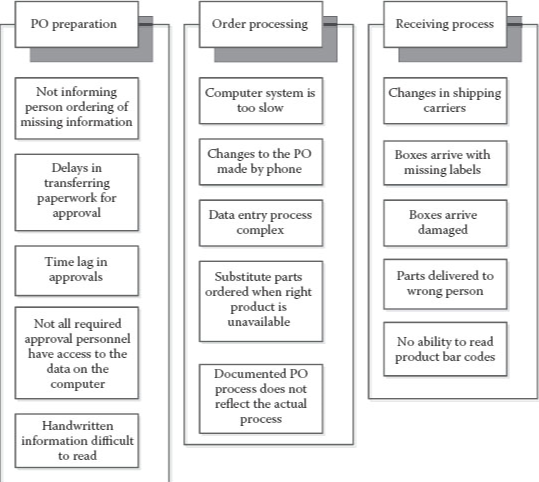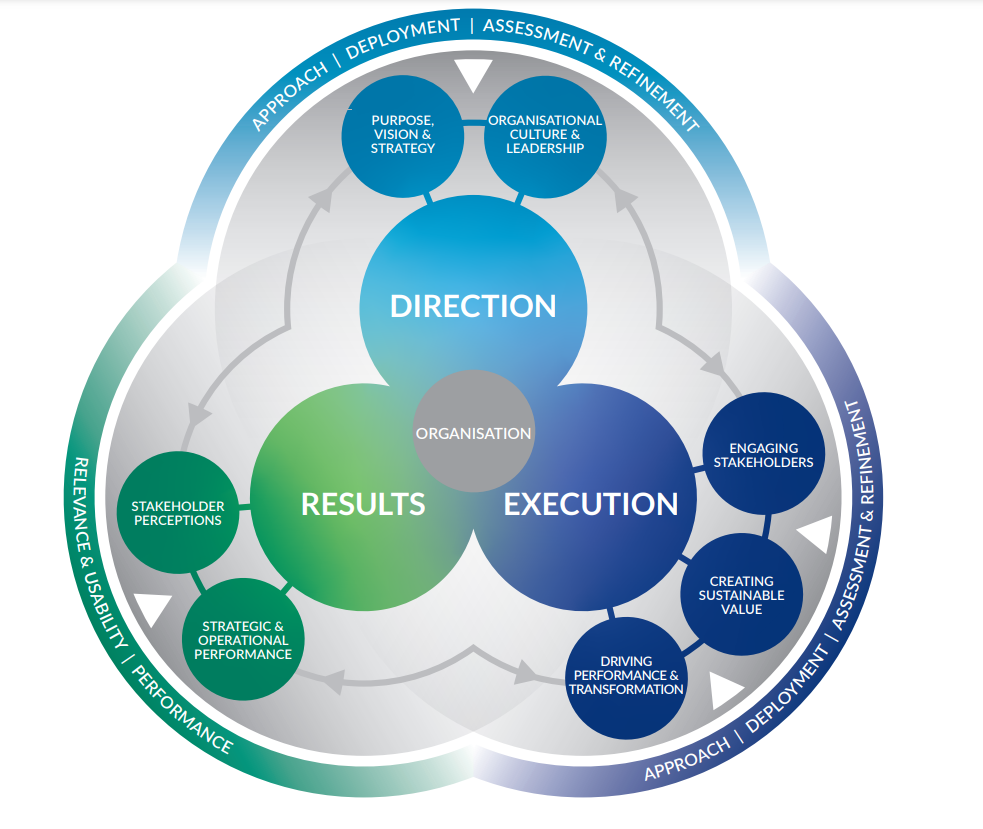Introduction
Biases and demotivation are widespread problems; they follow from the human brain’s constitution and communication flaws and drastically decrease work productivity. Employees cannot send priorities and deadlines correctly if they have no good tools for it or if they cannot use them properly, which leads to losses. If employees cannot understand each other, they probably will not be able to complete the project together: communication problems, thus, are critical for business operation. Their work productivity will fall drastically and they will probably be dissatisfied by their job. Several tools and diagrams may help solve those issues: affinity diagrams, excellence model, and quality planning. All of them will be explored, and problems of demotivation and biases in project management will be described.
The Problem of Demotivation
Employees’ efficiency falls when they see no reason to work and do not understand why they obtain their salary. Various negative emotions and feelings connected with work also reduce productivity and lead to work dissatisfaction. In that way, negative communication processes, such as bullying and workplace violence, a lack of trust, and wrong expectations, are primary reasons for discontent (Furnham and Treglown, 2018). Project managers may keep the employees motivated by improving their safety and communications and showing them the results of their work.
Biases in Project Management
Biases are repeatable cognitive problems that are hard to track; thus, they influence all decisions on all project management levels. Examples are misinterpretation, optimism, uniqueness, overconfidence, availability biases, planning, and base rate fallacies (Flyvbjerg, 2021). For example, misinterpretation is a typical problem in the case of loose wording, which may be interpreted differently by different people. Uniqueness, optimism, and overconfidence biases are based on one’s unconscious desire to blindly believe in own thoughts rather than doubt them to know the truth, as it is much easier. In all of them, one believes that something is true and that no proofs are necessary. Therefore, one believes that the project is unique and the best, that the enterprise will be successful in all cases, or that one’s competence is unquestionable. Cognitive biases often lead to project managers relying on their feelings and trying to guess what to do instead of much more efficiently relying on logic and facts (Virine, Trumper, and Virine, 2018). It is inefficient, results in failures, and demotivates both project managers and employees.
In that way, biases and demotivation are interconnected: one loses the desire to work when one sees that their expectations are not fulfilled, which calls disenchantment. Unrealistic schedules and expectations result from optimism and overconfidence, and when they fall, it obviously creates (Prater, Kirytopoulos, and Ma, 2017). Those issues are especially common nowadays due to large, multicultural teams required to complete large modern projects: in such teams, the chance of misunderstanding is much larger (Tabassi, 2019). Efficient workflow organization increases overall work efficiency, but specific tools are necessary to reduce biases and prevent demotivation.
Organizing the Workflow
As one can see, mentioned issues are interconnected, are they both result from people’s psychology. Those problems are systematic, which means they are inherently present in all humans, and their overcoming is necessary for project managers (Tabassi, 2019). Various metrics and key performance indicators (KPIs) may be used to quantitatively measure the project more objectively (Kerzner, 2017). Risk, change, cost management, and organizing good communication processes are crucial for successful projects (Lock, 2017). However, all these actions are vulnerable to biases: it is easy to underestimate risks or costs or misinterpret others’ words, business plans, and KPIs.
Innovative Techniques
Thus, along with common methods of project organization, specific innovative techniques allow project managers to manage problems of demotivation and biases specifically. Those tools include affinity diagrams, EFQM excellence models, and quality planning, each of which proposes a diagram. Affinity diagrams help clarify ideas and plans, the excellence model improves the understanding of the organization structure, and quality planning allows the creation of efficient plans. All those tools, however, may give wrong results if the project manager is biased: their efficiency depends on the ability to use them.
Affinity Diagrams
Affinity diagrams are a simple and powerful tool that enables managers to group ideas based on their similarities in them. They are constructed in four stages: identifying the area, dividing it into categories and filling them with ideas, prioritizing them, and forming subgroups from the organized ideas (Harrington and Voehl, 2016). Figure 1 shows an example of the diagram, where problems present in the enterprise are arranged into three categories: purchase order preparation, processing, and receiving.

EFQM Excellence Model
The European Foundation for Quality Management (EFQM, Figure 2) excellence model consists of several categories: direction, execution, and results, each of which is interconnected and acting together. These categories have several criteria which describe how those categories should be implemented (EFQM, 2022). Direction includes the purpose and vision of the organization, as well as the organizational and leadership culture. By defining the purpose and the culture, a project manager can improve the employees’ motivation, as they will see why they work and what they will obtain. Execution consists of stakeholder engagement, value creation, and performance driving: it is the process of action. Results consist of performance and stakeholder perception measurement: it requires evaluation of all results based on actual facts and successes. The model is beneficial for knowledge management, which is important for project management based on facts and knowledge rather than guesses (Criado-García, Calvo-Mora, and Martelo-Landroguez, 2019). In that way, EFQM diagrams help in overcoming biases and employees’ motivating, implementing measurable criteria for work.

Quality Planning
It is a simple technique that helps to create more realistic and less biased plans, which are easy to correct if necessary. It contains four parts: defining, designing, monitoring, and taking action, and after the action, the process of defining starts again (Department of Health, 2022). It helps project managers deal with projects in variable conditions and overcome biases by correcting the plan on all levels. First, one defines lists of problems, opportunities, clients, stakeholders, and needs; affinity diagrams are useful for arranging those lists in an understandable way (Harrington and Voehl, 2016). Then, results are monitored, and work goals are delegated to workers; new plans are created based on those results and their evaluations.

Tools Implementation: Barriers and Opportunities
Strength and Weaknesses
The mentioned tools are specifically helpful for bias reduction and motivation keeping, but they have weaknesses and barriers.
- The affinity diagram’s main strength is its ability to arrange data, which is crucial to understand complex information. The weakness is that the tool depends on the manager’s ability to choose rights categories.
- The excellence model enables a manager to see the organization as a whole system, helping to understand how and why it works. It can significantly improve work satisfaction by showing employees why they work and obtain their salary, and it reduces biases by elucidating and analyzing facts associated with the project. However, as the model is large and complex, it may correlate poorly with reality and, thus, give wrong results too.
- Quality planning produces a flexible plan that may be easily changed based on the actual facts and results, reducing bias and making plans more realistic. Still, it depends on the ability to monitor results and take action. In that way, if metrics are wrong and employees are demotivated, the tool will not be able to change the situation, and other tools will be necessary.
Barriers to Implementation and Overcoming Them
When one tries to use affinity diagrams or business models to overcome a bias, the model itself becomes twisted. For example, when a project manager uses the wrong categories for affinity diagrams, the whole tool gives wrong results. To choose the correct categories, a project manager must overcome their own biases; only after that they help other team members to overcome theirs. The EFQM model, while showing the detailed structure of an organization, is still a model, and its complexity may be the reason for its difference from reality. To make it actually useful, a project manager should constantly monitor the model and change each category according to actual data. Quality planning requires result monitoring, too, and the ability to realize plans. While it is a good instrument to make plans more realistic, employees’ motivation should be already ensured by using two other tools. Therefore, all three tools are better to use together in a bunch, as each of them solves the problem partially.
Summary and Conclusion
Each of the mentioned tools helps to reduce bias, and the degree of reduction depends on one’s ability to use the tool right. Work satisfaction will improve as employees will see the reason and results of their work, preventing disenchantment. Affinity diagrams help organize ideas together, reducing the misinterpretation, as all employees will see the data more clearly. However, as one’s perception is inherently biased, and no matter which tool one uses, there is a chance that the result will be biased. Quality planning helps to create flexible and fact-driven plans, but work results should be monitored, and workers should be motivated to take action.
Demotivation may be overcome by improving the employees’ understanding of why they work and showing them their work results. While there is not always possible to pay workers the wage they want, it is possible to show them clearly why they obtain their wages, improving the trust between employees and managers. The EFQM model shows the cash flow in the company, enabling employees to see how they obtain their money and, thus, keep motivated. Therefore, all three tools can better be used together, complementing each other.
Reference List
Criado-García, F., Calvo-Mora, A. and Martelo-Landroguez, S. (2019). ‘Knowledge management issues in the EFQM excellence model framework.’ International Journal of Quality & Reliability Management, ahead-of-print(ahead-of-print).
Department of Health. (2022). Quality Planning – Minnesota Dept. of Health. [online] Web.
EFQM. (2022). The EFQM Model. [online] Web.
Fagan, B. (2021). What is the EFQM excellence model and how useful is it for you? [online] Triaster.co.uk. Web.
Flyvbjerg, B. (2021). ‘Top ten behavioral biases in project management: An overview.’ Project Management Journal, 52(6), pp.531–546.
Furnham, A. and Treglown, L. (2018). Disenchantment: Managing motivation and demotivation at work. London ; New York, Ny: Bloomsbury Business.
Harrington, H.J. and Voehl, F. (2016). Evolutionary and improvement tools that every innovator must know. Volume 2. New York: Productivity Press.
Kerzner, H. (2017). Project management metrics, KPIs, and dashboards: A guide to measuring and monitoring project performance. John Wiley & Sons, Inc.
Lock, D. (2017). The Essentials of Project Management. Routledge.
Prater, J., Kirytopoulos, K. and Ma, T. (2017). ‘Optimism bias within the project management context.’ International Journal of Managing Projects in Business, 10(2), pp.370–385.
Suárez, E., Calvo-Mora, A., Roldán, J.L. and Periáñez-Cristóbal, R. (2017). ‘Quantitative research on the EFQM excellence model: A systematic literature review (1991–2015).’ European Research on Management and Business Economics, 23(3), pp.147–156.
Tabassi, A.A. (2019). ‘Challenges for project management in the 21st century.’ 4th International Conference on Rebuilding Place. [online]
Virine, L., Trumper, M. and Virine, E. (2018). Heuristics and Biases in Project Management. PM World Journal Heuristics and Biases in Project Management, [online] VII. Web.